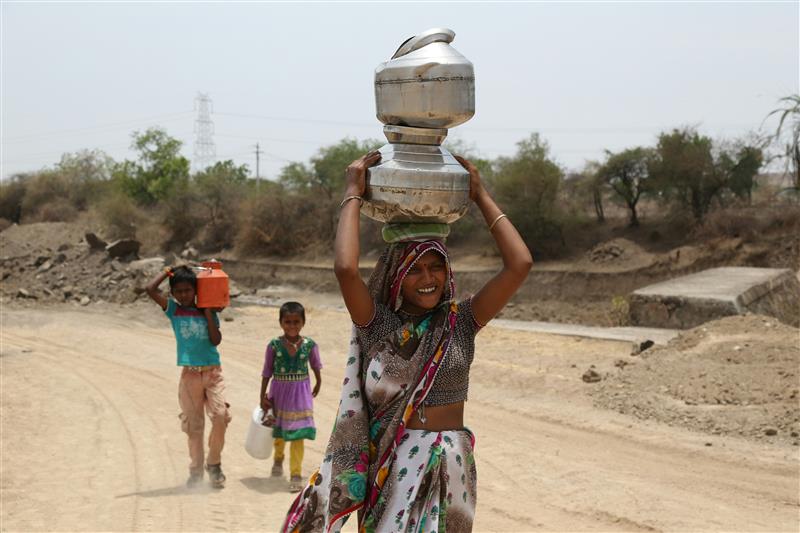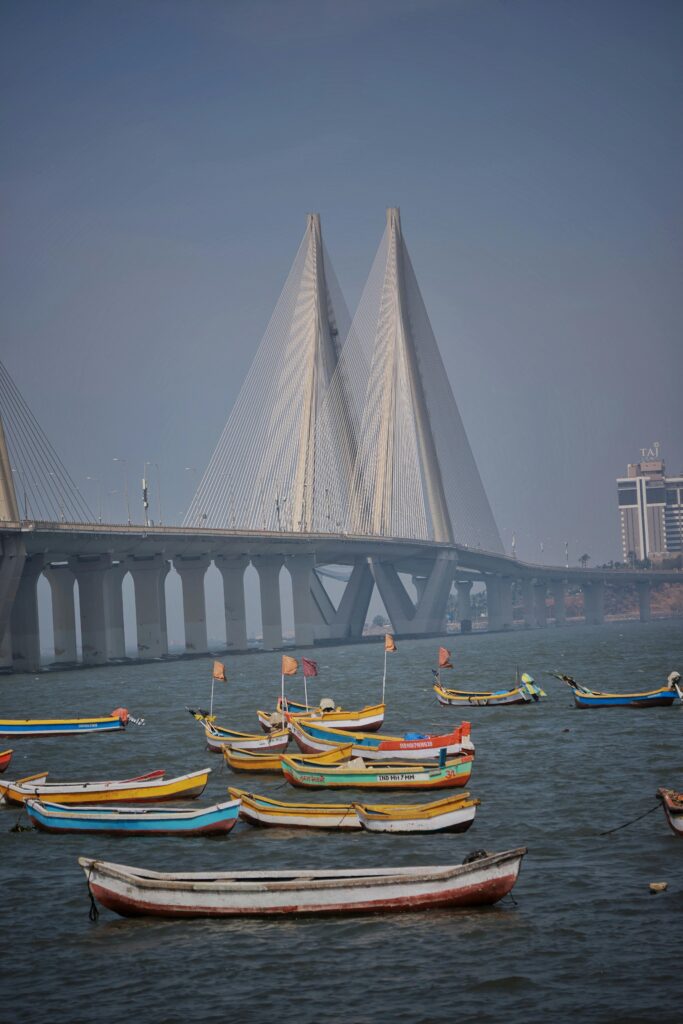Written by Dr. Sachin Nandha, ICfS
Education. Innovation. Capital accumulation.
One-tenth of India’s population pulled itself out of poverty, that’s almost 140 million people, in five years up to March 2021, according to Reuters. Suman Bery, of the Indian think-tank Niti Aayog, ‘Rural areas saw the strongest fall in poverty, according to a study, which used the United Nations’ Multidimensional Poverty Index (MPI), based on 12 indicators such as malnutrition, education and sanitation.’ Let’s just get that number into perspective. 140 million is two United Kingdoms being pulled out of poverty in five years. What is happening in India now, and what China has managed to do, is nothing short of miraculous.
With economic hope, culture changes too. Women become empowered to take control of their lives. They consequently have fewer children. The children they do have receive a better diet, and suddenly start growing taller and healthier. Better sanitation, running water, regular electricity and even cheap internet supply all culminates in an atmosphere of confidence about the future. This optimism creates a psychology which drives risk. Risk coupled with an ever-increasing access to credit drives enterprise. Only through business can wealth creation flourish. This, above all else has supported India’s rise.
Prime minister Modi’s policy of direct support to rural families is one such case where the State has enabled the poor. Using digital bank accounts has meant that people are suddenly able to build toilets and bring electricity into their houses through government credit. Middlemen are cut out, and so is corruption and exploitation.
Of course, this does not mean that India’s poor can suddenly buy electric cars, or holiday homes, or expensive designer clothes. However, consider a family which was earning three dollars a day five years ago, and now it earns ten dollars per day, they can eat better food, send children to school, and even afford a mobile phone. A little luxury goes a long way. Brazil’s president Lula once quipped “poor people love luxury. Only intellectuals hate luxury.”
The path India is now taking is one that many before her have traversed. It started with our own country — the United Kingdom, followed by the rest of Europe, then the US, and Japan, East Asian countries, China and now India. There is a well-trodden path out of poverty, backwardness, and despotism. We need to let India walk that path, support it, and where we cannot support her, get out of her way!


The path to prosperity
Academics and researchers often say there are many ways out of poverty. Maybe, but that is speculation through sophisticated theory and models, all of which belongs to the future. As far as history is concerned, the one sure way to prosperity centres around three forces. The first is accumulation of capital; second is an innovative society driven by commerce; and third a society underpinned by a robust education model. At this point readers can jump off if they don’t have an appetite for details. However one should remember these three things — the surest recipe for poverty alleviation:
Capital accumulation, innovation and education.
Life, before capitalism, for most humans throughout history has been poor, short and brutal. Less than a hundred years ago the literacy amongst Indians was less than 10% amongst men, and as low as 5% for women. Around half of the population died before reaching adulthood. In India life expectancy has risen to 70 and is still rising. Even when we think about the Roman empire at its height, or the Caliphs of Persia, even if they had wanted to bring affluence to their subjects, they simply lacked the know-how to do so.
When we visit palaces, temples, and estates of old, we are seeing how the few, most powerful lived. We are not seeing how the common person lived. Let us suppose they, the rich and powerful, had the desire to bring the masses out of abject poverty, it was not in their gift to be able to do so.
To bring large populations out of poverty ‘all you need’, according to Erik Solheim, a well-known global leader on environment and development, ‘is a strong development-orientated state, a vibrant market with innovative business, and a resolute focus on education’. Private business, personal enterprise, and the free market, all underpinned by a rule of law, where contracts can be enforced, and people brought to justice quickly and fairly, provides the edifice for the magic of capitalism to happen.
The state is an enabler, not a doer.


The first thing it can enable is education. India has its Institutes of Technology (IIT), and Management (IIM), as well as its All-India Institutes of Medical Sciences (AIIMS), elite colleges that are affordable. In the last fifteen years the number of IITs and IIMs has blossomed. Fifteen new mega institutes have been rolled out throughout the country over the last ten years, and many more are under construction. India is pursuing what many at the United Nations know, but fail to champion, which is an education system funded by the state, supported by the people through taxation, and not foreign aid. Education that is paid for privately, or through taxation, and is free or affordable at the point of use, is the surest way to create sustainable educational institutions. India has a burgeoning private education sector, which is often patchy in quality, and has led to exacerbating the gap between the “haves” and “have nots”. Around 10% of Indians control around 70% of the country’s wealth. A strong state, while allowing market forces in education, also needs to spend money, lots of it, on delivering an outstanding state-led, tax-funded schooling system. India today spends a measly 2.9% of its GDP on education. When compared to the United Kingdom (5.5%), Norway (8%), even Brazil, a fellow BRIC, spends 6.2%, India is dangerously behind.
India is failing to spend enough money on education.
India has had a strong development focused state since 2014, after Modi’s BJP won a massive majority. Whereas China’s CCP never had to consider people’s opinions, and were never held accountable, the Indian state, led by a vibrant, but somewhat dysfunctional democracy, relies on a multitude of civic liberal institutions, and a federal-state apparatus to get things done. It can be slow, and infuriatingly inefficient. That is why the Indian state in many ways needs to be rolled back in many areas of civic life, especially to get out of the way of business and commerce. Having said that a strong state must enforce the rule of law, and enforce contracts. The law must be fair and swift. Neither is the case in India at present, although it has been improving in leaps and bounds. A strong state must bring taxes down, encourage innovation, and responsible risk-taking, making it easy for people to start businesses, fail, and start again. Apart from creating a rule-based society, it needs to get out of the way.
India is failing to invest in building a sufficient rule-based society.
The United Kingdom spends 1.3% of GDP on Justice; the United States spends circa 2%; France spends 1.8%; and even Brazil spends 1.4%. India at 0.1% is simply not up to the mark when it comes to investing in the mechanisms that delivers justice for the public, and its business community. The fallout of this failure to adequately invest in a rule-based society is the status quo — a society ridden by caste, tribalism, and ethnic and religious groupings. In India, if the common person wants justice, they must be aligned to a caste, or religious grouping, or have access to their local despot, the village chief. Even in cities a connection with a the local Member of Parliament where an immense amount of power is concentrated is always helpful. Most businesses in India require a tacit nod from the local Member of Parliament before any major investment can be made safely. The risk profile of investing in a local vicinity becomes exponentially riskier if one does not align with some group or another for protection. There is little other way of receiving justice in India. Much more research in this space needs to be done, but one thing is for sure, if India is to achieve her potential, she must invest more money in the institutions of a rule-based society.
India is vast. It is vast in every which way imaginable. Her people exist and live across several centuries. For India to reach heights of affluence, while maintaining a sustainable ecology, and for her people to innovate their way out of backwardness, and the shadow of colonialism, she must invest in her people, and give them a rule-based society.



